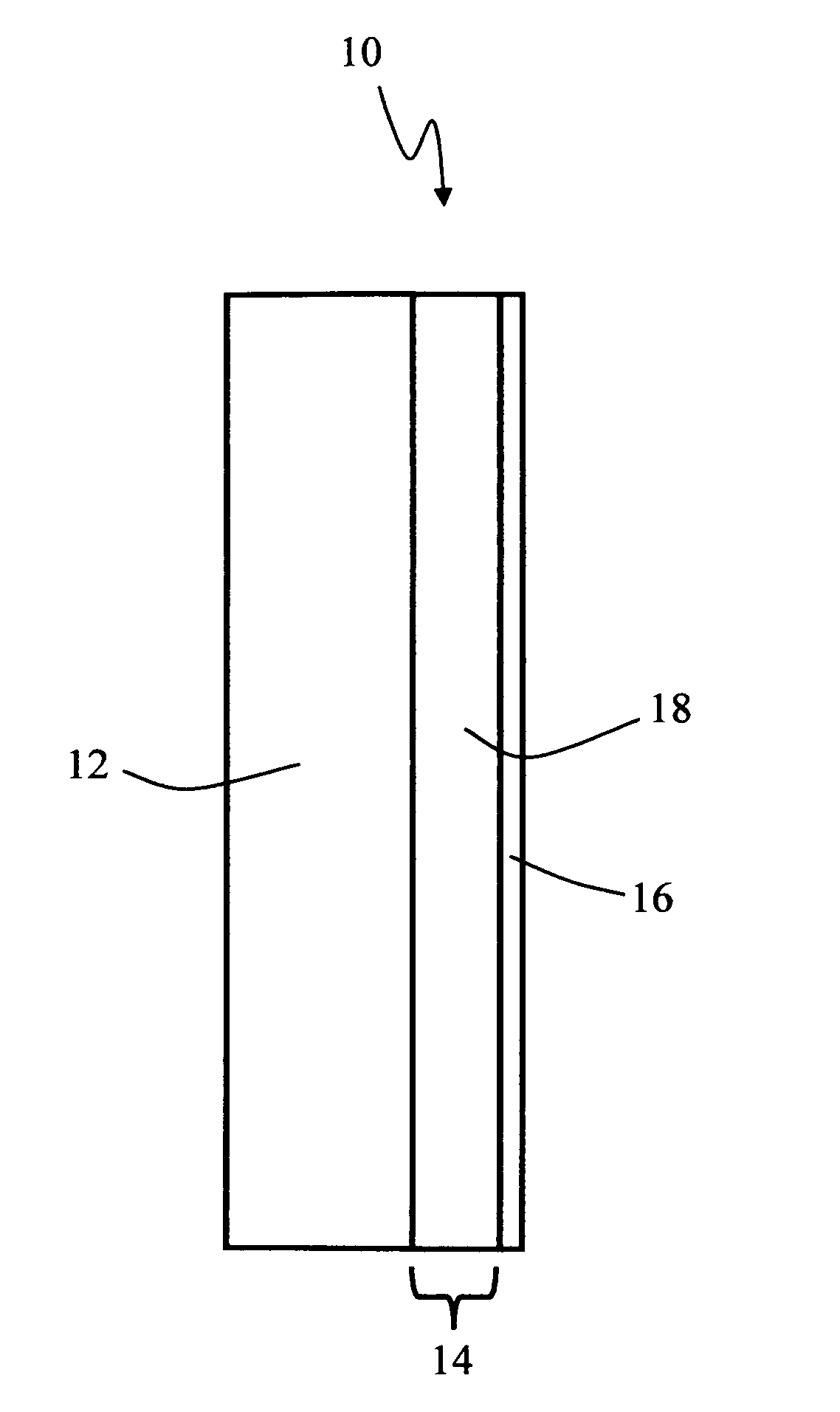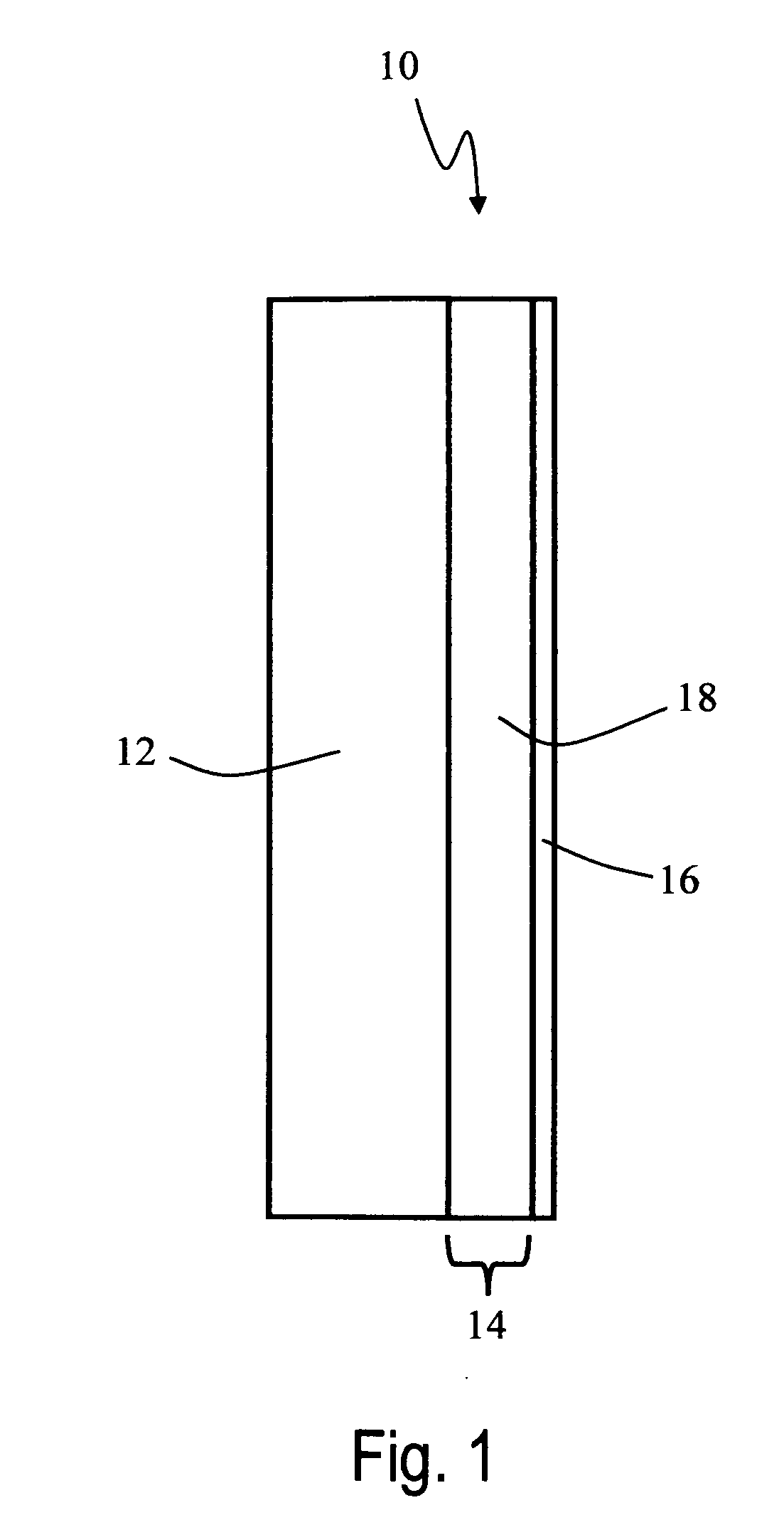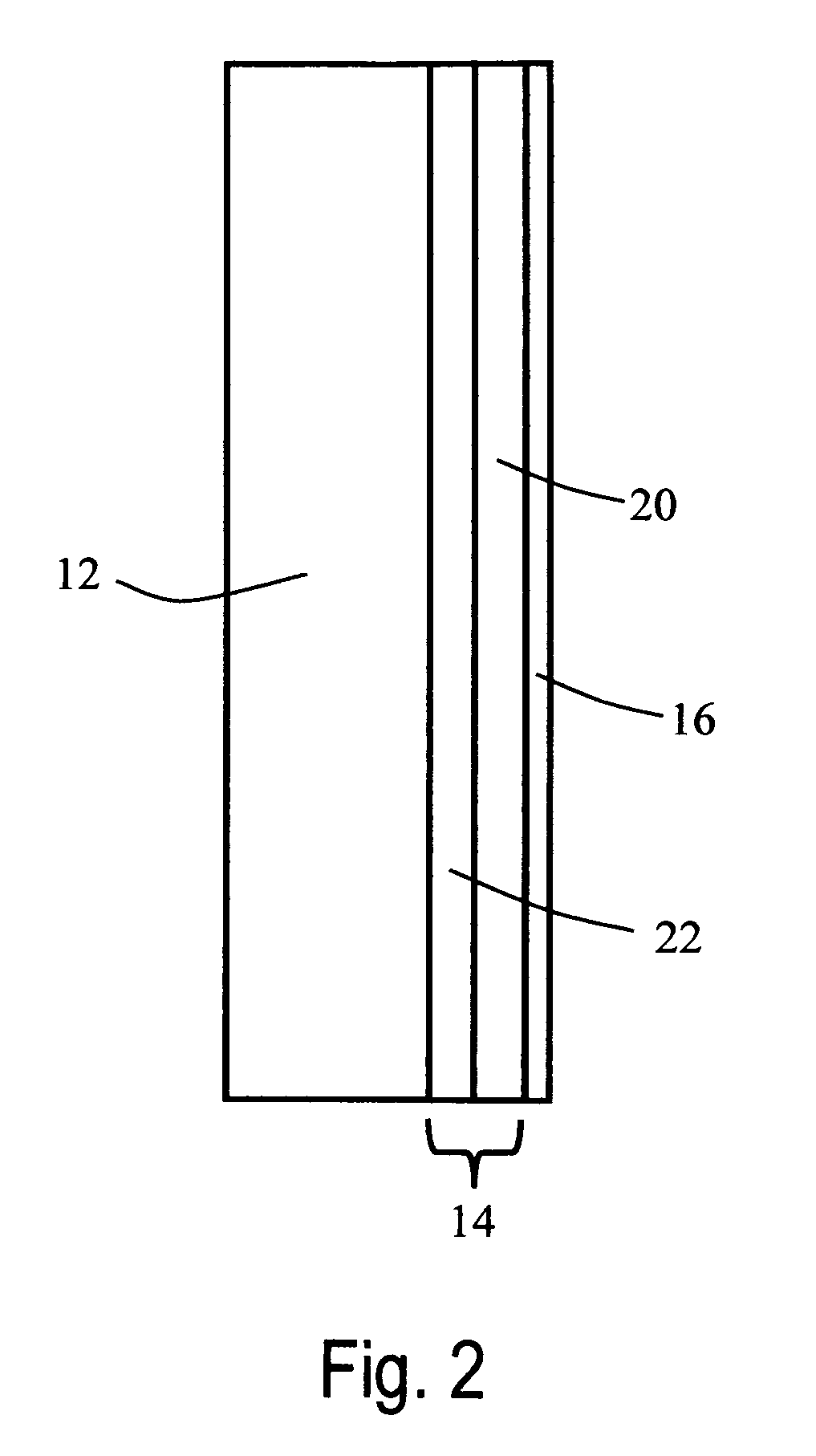Multiple layer glazing bilayer
a multi-layer glazing and bilayer technology, applied in the direction of synthetic resin layered products, transportation and packaging, chemistry apparatus and processes, etc., can solve the problems of delamination or haze formation at the edges of conventional bilayers, general undesirable full thickness of two-pane glass safety panels, etc., to achieve the effect of reducing plasticizer content and reducing plasticizer conten
- Summary
- Abstract
- Description
- Claims
- Application Information
AI Technical Summary
Benefits of technology
Problems solved by technology
Method used
Image
Examples
example 1
[0047] Two bilayers are constructed having three layers—glass / / poly(vinyl butyral) / / poly(ethylene terephthalate). The glass layers are 2.3 millimeters thick. The poly(ethylene terephthalate) layers are 0.18 millimeters thick with a hardcoat (available from CPFilms, Inc.). The poly(vinyl butyral) layer in the first bilayer is 0.76 millimeters thick and has a plasticizer (triethylene glycol di-(2-ethylhexanoate)) content of 38 phr. The poly(vinyl butyral) layer in the second bilayer is 0.76 millimeters thick and has a plasticizer (triethylene glycol di-(2-ethylhexanoate)) content of 30 phr. Both poly(vinyl butyral sheets) also contain adhesion control salts and UV absorbers.
[0048] Measurements are taken immediately after lamination and then again after the panels are exposed to an environment of 70° C. and 100% relative humidity for one week. Results are shown in the table, below:
First Bilayer (38 phrSecond Bilayer (30 phrplasticizer)plasticizer)Initial Moisture %0.40.3Final Moistu...
PUM
| Property | Measurement | Unit |
|---|---|---|
| Fraction | aaaaa | aaaaa |
| Fraction | aaaaa | aaaaa |
| Fraction | aaaaa | aaaaa |
Abstract
Description
Claims
Application Information
 Login to View More
Login to View More - R&D
- Intellectual Property
- Life Sciences
- Materials
- Tech Scout
- Unparalleled Data Quality
- Higher Quality Content
- 60% Fewer Hallucinations
Browse by: Latest US Patents, China's latest patents, Technical Efficacy Thesaurus, Application Domain, Technology Topic, Popular Technical Reports.
© 2025 PatSnap. All rights reserved.Legal|Privacy policy|Modern Slavery Act Transparency Statement|Sitemap|About US| Contact US: help@patsnap.com



